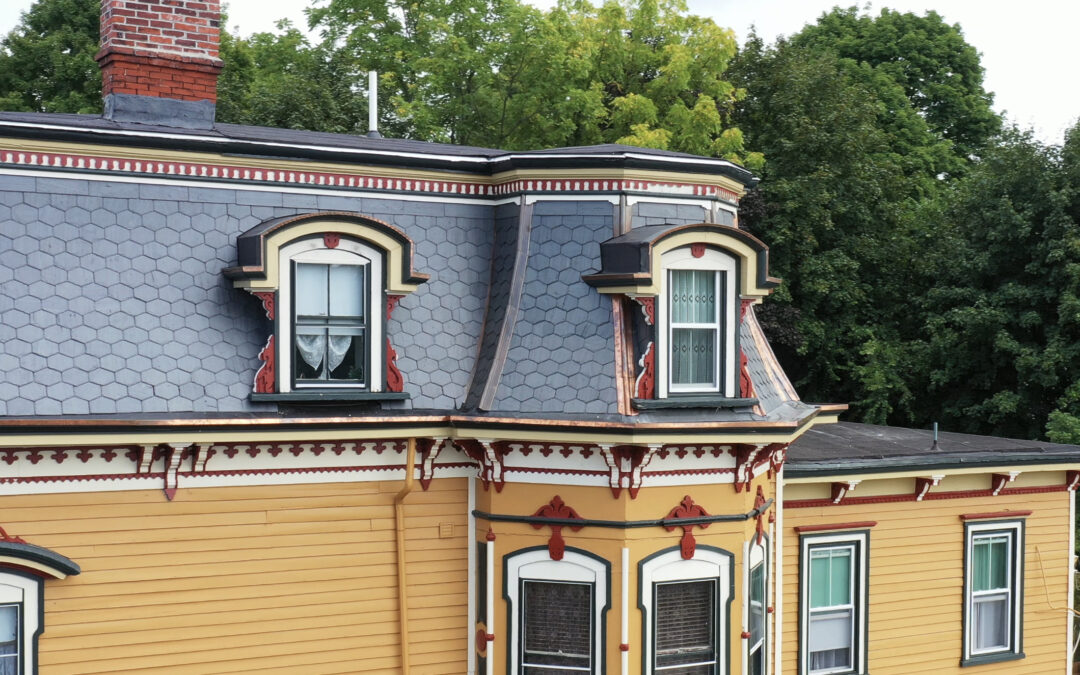Historic Roof Restoration Guide
The United States National Register of Historic Places has more than 90,000 properties on its list, and nearly 2,000 of those are in New Jersey alone. And that’s just the National Register. Plenty of other historic buildings aren’t on the list but are still nearly a century old (or older). And if you own one of these landmark properties, you’ll need to renovate or repair your roof eventually.
In this guide, we’ll cover everything you need to know about historic roof renovation and repair and also touch on some of the unique challenges that renovating an old roof presents.
What Makes A Roof “Historic”?
The first step in understanding how to renovate or repair your historic roof is to know what qualifies as a “historic” roof.
There are a few different factors that contribute to a roof’s historical status:
The age of the building: A building is typically considered historical if it’s more than 50 years old.
The building’s historical integrity: Historic buildings are often distinguished by their architectural style, and their roofs are usually an essential part of that style. To be considered historic, a roof must resemble the original roof, even if it’s been repaired or replaced in the past.
The building’s significance: To be placed on the National Registrar of historic places, a building also needs to have historical significance, such as its association with a famous person or event or even its architectural importance.
Common Materials Used For Historic Roofs
Depending on the age of the building, there is a wide range of materials that the original builder may have used on your roof:
Tile – Tile roofs are some of the most durable and longest-lasting roofing materials, which is why they’re often used on historic buildings. Clay tiles, in particular, can last for over a century with proper care and maintenance.
Slate – This natural stone has been used as a roofing material for centuries and is still a popular choice for historic buildings. Like tile, slate is very durable, but it’s pretty fragile. Heavy objects or severe weather can easily damage it.
Wood – Wood shingles and shakes were once the most common roofing materials in America but fell out of favor in the 20th century due to their higher price and maintenance needs. Still, historic buildings often have wood roofs because they offer a classic and quite beautiful look.
Copper – Copper is a popular choice for historic roofs because it’s visually appealing and durable. Copper roofing resists corrosion and rust and can last for over 50 years with proper care.
Historical Roof Restoration Process
Once you identify an issue with your roof that needs to be repaired or realize your historic building may require a new roof, you should call a reputable roofing contractor who has experience with historic roof restoration. Here’s what you can expect next:
Assessment
The first step in any roofing project is to assess the damage and determine what needs to be done. This assessment is critical with historic roofs, as you don’t want to damage the existing materials. Your contractor will look closely at your roof from the ground and rooftop or via drone to get an accurate picture of the damage and decide on the best course of action.
They’ll also try to determine the cause of the damage, as this will inform their repair or replacement plan. For example, if your roof is leaking, someone will need to find and fix the source of the leak before proceeding with any further repairs.
Repair or Replacement
Once the assessment is complete, your contractor will present you with two options: repair or replacement. Repair may be the best option in some cases, such as with a small leak. But if the damage is more extensive, they may recommend replacing the roof entirely.
Either way, roofing contractors will often work with historians and other experts to ensure that any repairs or replacements are done in a way that maintains the historical integrity of your roof.
Documentation
If you decide to go ahead with a roofing project on your historic building, you and your contractor should be sure to document the process.
Documenting the process will include
- taking before and after photos
- keeping records of the materials used
- saving receipts or warranties
This documentation will be necessary for the future if you ever need to repair or replace your roof again. It may also come in handy if you decide to sell the property, as potential buyers will want to know that the roof has been adequately cared for and that any repairs or replacements were done in a way that maintained the property’s historical integrity.
Problems You May Encounter When Restoring A Historical Roof
While there are many benefits to restoring a historical roof, you may encounter some problems along the way.
Working with historic materials
One of the challenges of restoring a historical roof is working with old materials that may be difficult to find. If the materials aren’t available, your contractor will need to find a proper substitute that will match the look of your roof without causing additional issues with the roof’s integrity. For example, combining metals can lead to corrosion, so it’s essential to use materials that are compatible with each other. This can make the project more expensive and time-consuming than a typical roofing job.
Maintaining historical accuracy
It’s also necessary to ensure that any repairs or replacements are done in a way that keeps the historical accuracy of your roof. This can be challenging, as you’ll need to find materials that match the originals as closely as possible. You may also need to get approval from historical organizations before making any changes to your roof.
The Importance Of Hiring A Qualified Roof Restoration Contractor
When it comes to roofing projects, it’s always best to hire a qualified contractor. But it’s vital when you’re dealing with a historic roof. You’ll need to ensure your contractor is experienced in working with historical materials and that they understand the importance of maintaining the historical integrity of your roof.
Alte Exteriors has been repairing and replacing roofs for over 50 years in Northern and Central New Jersey, and our team has the skills and knowledge necessary to handle any historic roofing project. Contact us today to learn more about our services or to schedule a consultation.

